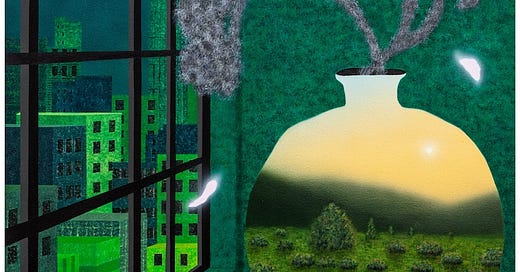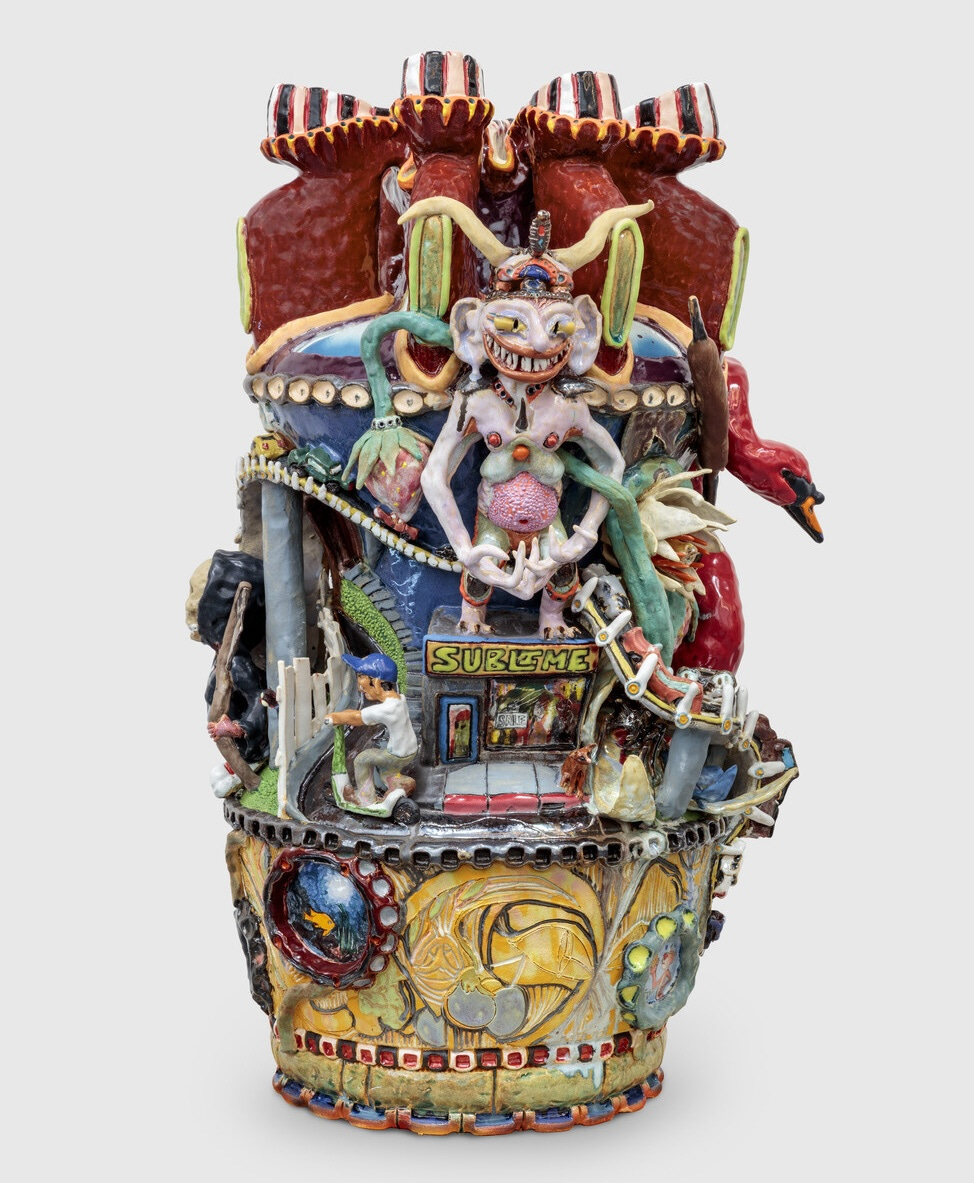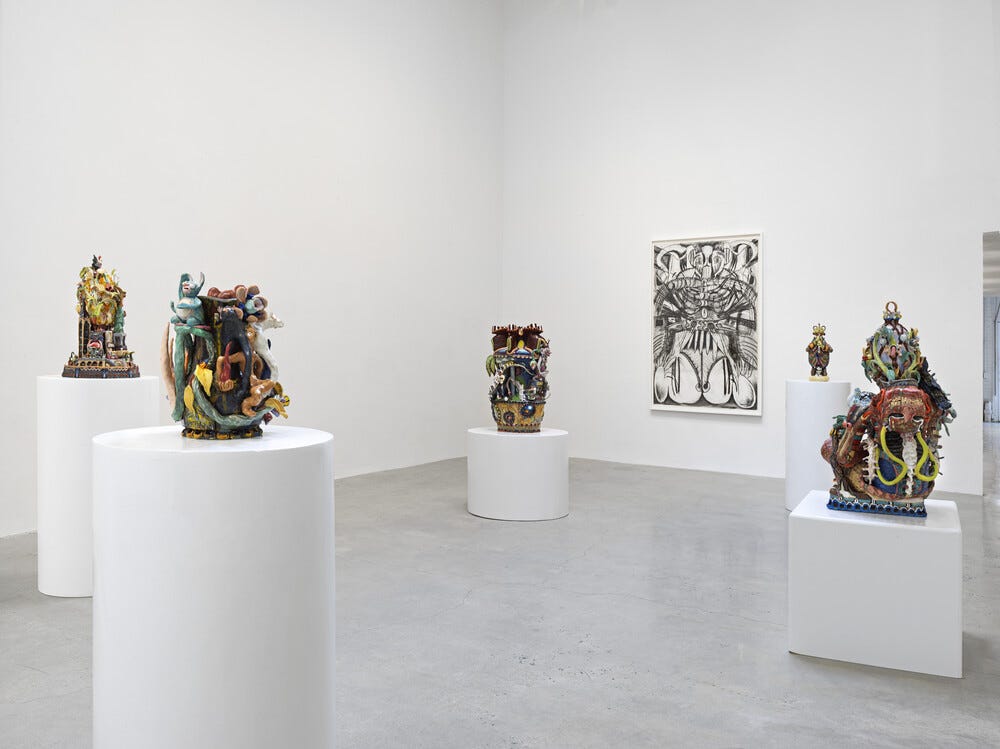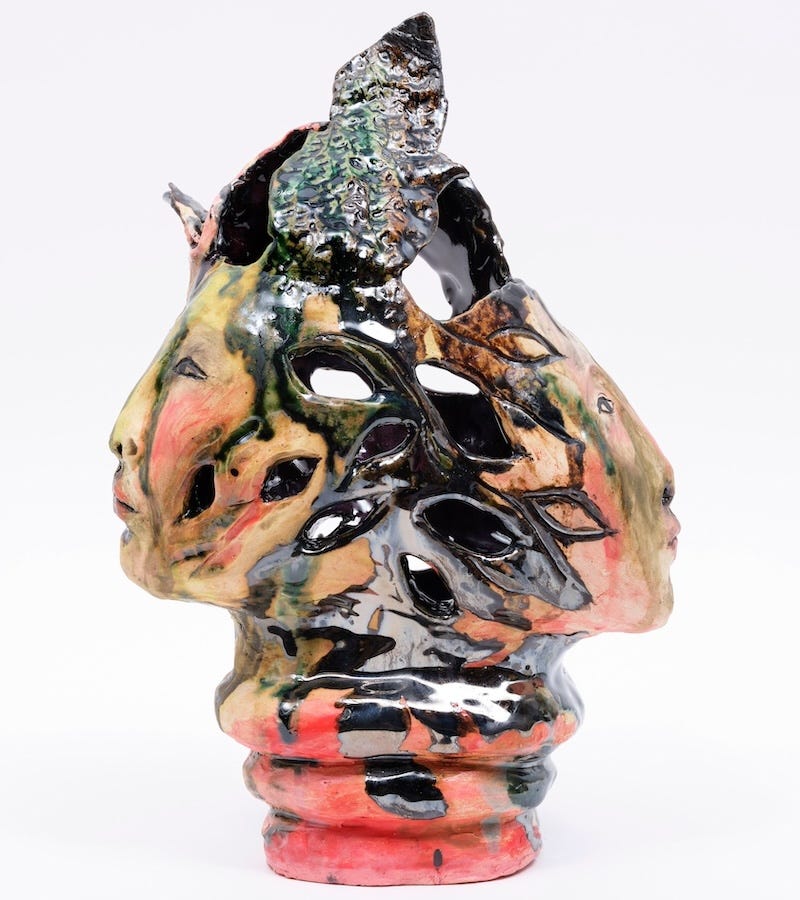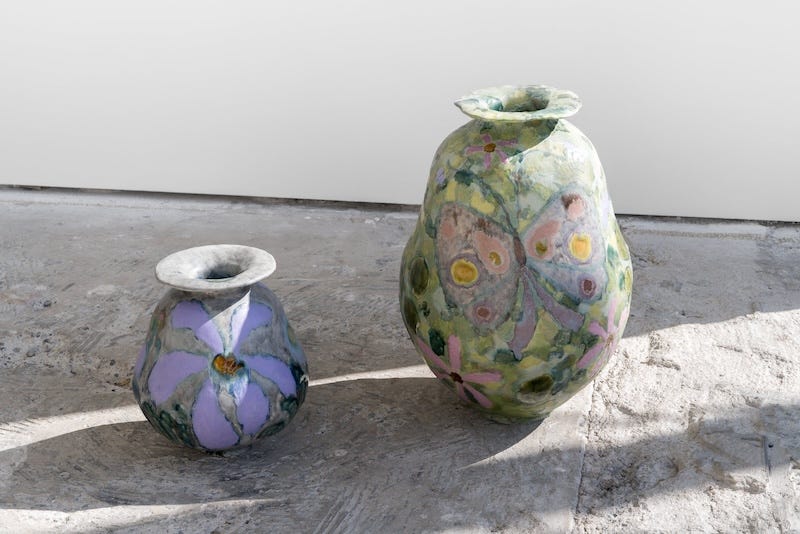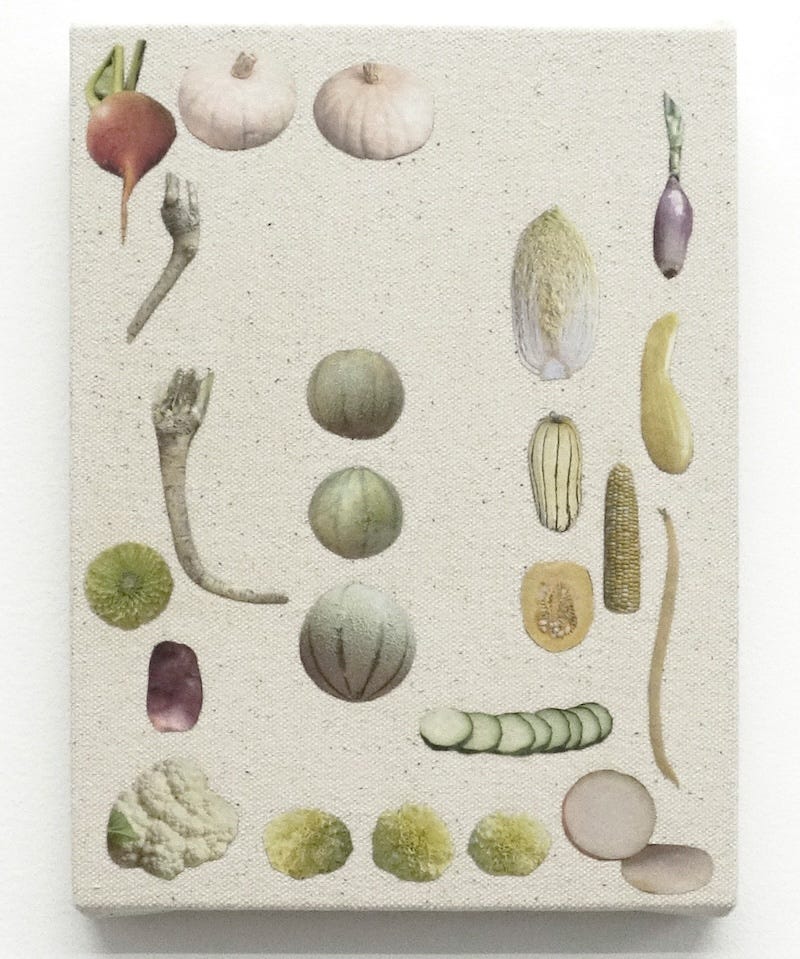
“You make good work by (among other things) making lots of work that isn't very good, and gradually weeding out the parts that aren't good, the parts that aren't yours. It's called feedback, and it's the most direct route to learning about your own vision. It's also called doing your work. After all, someone has to do your work, and you're the closest person around.” —David Bayles, Art & Fear
When I’m feeling insecure about something, I start thinking quite a lot about what others think about it. I switch into I-need-some-guidance mode, which seems pretty natural and healthy in most circumstances laced with uncertainty, but based on the level at which I rely on feedback for my next move, too much—or unwanted advice—can also easily turn into a quagmire of even further self-doubt.
In creative work, where exactly is the line between expression and reception? Feedback is good, but is it possible to expect too much? What’s in the middle of the spectrum between “What will I do if no one likes this?” and “Who cares what anyone thinks!”
Although I’m guilty of offering the same words of encouragement, admittedly the latter has never been very helpful advice for me. While I want to go, “Yeah, who cares!?”—I try to view things from an outside, objective point of view wherever I can—a nagging voice in the back of my mind is always thinking, well, it actually really does matter.
We continue to subscribe to the romantic idea of an artist—or writer—as a kind of sole, oft-tortured creative force, when in reality, so much of what we do is immanently social. The work we make is inherently layered with meaning and messages that don’t fully bloom until someone else either literally or figuratively reads them; until some kind of exchange takes place.
Of course there have been—and are—let’s say, solipsistic artists, who produce work for the sake of making it, which is a special (even enviable) brand of lack of concern with what others really think because it’s not for anyone else. These folks might not be too concerned with whether “everyone else” is going to like or respond to what they do because hardly anyone else gets to see it in the first place. Think Vivian Maier, Henry Darger, or the creators of elaborate artists’ environments, many of whose work was only discovered by an outside audience after their deaths.
There are a million reasons one might not show their work; it could be that one actually cares too much and is terrified of rejection. Or you’re Hilma af Klint and didn’t consider your work to be art so much as spiritual communications, so you ordered it to remain unshown. Regardless of the reasons, it’s interesting to compare various approaches and attitudes because often, buried deep beneath any insecurity about whether we’re doing the right thing or making good work, there is a deeply ingrained sense of needing validation.
From where I sit (and I take this advice myself when it comes to my writing): Show the work you’re most proud of and also show what you’re not sure about. But know the difference. Then, measure the feedback. Instinctually, if you’re doing something you feel strongly about and are compelled to do, even in its formative stages it will teach you things.
It does matter what people think, but it’s not entirely about what people think. If a significant role of the artist is to explore new ways of thinking and connecting ideas, then there’s no such thing as a message without risk of some sort of rejection. It’s up to use to evaluate that in the context of what we’re doing. When the feedback is good—when it resonates—run with it.But remember to measure it up against your own instincts, interests, and values. You’ll know when something doesn’t feel right, if it feels forced or insincere, because it will nag at you.
And if rejected somehow—what kind of rejection is it? Constructive? Do they not understand? Disagree? Want to troll? Did they spend enough time with it? Sometimes, the why of any rejection is fodder for further fine-tuning ideas. Somewhere between “I don’t care” and “What will everyone think?” is a toolbox.
If you like what Young Space is about and feel inclined to support what I do here, please consider a paid subscription.
It’s $6 per month (or $5 per month annually) to access all opportunities 24/7, get bonus issues, and support me in assembling and expanding what I can offer in this newsletter. To those who are already supporting the digest, my heartfelt thanks—it means a lot.
See you next week!
—Kate
What you’ll find below:
Featured artist: Sharif Farrag
Exhibitions to see in Johannesburg, London, Los Angeles, Montréal, Mexico City, Munich, and New York City
Sixteen opportunities for artists with deadlines coming up soon
Featured Artist: Sharif Farrag
I’ve been following the remarkable work of Sharif Farrag since some of the earliest days of Young Space, and his sculptural ceramics never cease to amaze. I love his analogy, “The devil is made of fire and people are made of mud. Ceramics are a mixture of the two.”
Growing up in Los Angeles, the child of a Syrian mother and an Egyptian father, Farrag absorbed his parents’ Arab heritage and the pop culture of the region and U.S. more broadly. Hybrid Moments, his solo exhibition now at Jeffrey Deitch in New York, takes its title from a song by The Misfits, delving into the hybridity of culture, heritage, and his upbringing. “His approach to ceramics is reminiscent of the free-styling in music like jazz and hip hop, an improvisational style that encompasses multiple references,” the gallery says.
Hybrid Moments continues through April 19.
Exhibitions
NEW YORK CITY | CHOZICK FAMILY ART GALLERY
FAMILY/TREE
In the spirit of begin-as-you-mean-to-go-on, the inaugural exhibition of Chozick Family Art Gallery brings together work of more than two dozen artists whose work has provided significant points of inspiration in the gallery’s founding, including Jack-Arthur Wood, Sara Jimenez (pictured), Amy Bravo, Polly Shindler, and many more.
Runs through March 29
MONTRÉAL | GALERIE NICOLAS ROBERT
Mel Arsenault: Les Baumes Fractales
“On her sculptural canvases, patterns morph and evolve as they blend with one another: the flower’s core spreads out somewhere in the sky, gold and concrete are in tune, and the stem meets the butterfly. So many humble patterns forming something baroque for a moment of enchanted candour.”
Runs through April 5
NEW YORK CITY | HARPER’S
Sung Hwa Kim: Spring, Summer, Fall, Winter, and Spring
Kim’s still lifes draw on the traditional motif of Korean moon jars as portals to alternate times and places, all situated in vibrant domestic spaces overlooking Brooklyn. (You can read more about this work in my article on Colossal, too.)
Runs through April 5
More shows worth a peek:
Simphiwe Ndzube: iNtwasahlobo at Stevenson Gallery, Johannesburg, through March 20
Magic Echoes: Brazil Diasporas' Vibrant Encounters with Ancestrality at M+B, Los Angeles, through March 22
Pedro Friedeberg: Simetriás y Punto de Fuga - 70 Años de Creación at Saenger Galería, Mexico City, through March 29
Andrew Gilbert: Andrew is Trapped in Tiger Fur Church at Sperling, Munich, through March 29
Richard Sides: Psychology at Carlos/Ishikawa, London, through April 12
Artist Opportunities
Young Space emphasizes fully-funded opportunities with low or no entry fees and programs that focus on creative and professional development for visual artists and curators. Deadlines are coming up soon to apply for these grants, fellowships, residencies, and more.
Paid subscribers, check out the whole list anytime at yngspc.com/opportunities and enter the password you received in your signup email. Can’t find it? Just shoot me a note. Thank your for your support!
International Residency Fellows at the National Taiwan Museum of Fine Arts 2025
Deadline: March 24
The National Taiwan Museum of Fine Arts (NTMoFA) International Residency Program invites international professionals to conduct research and engage in collaborative exchanges at the museum. This initiative aims to promote international dialogue and foster research on its collections by providing access to its resources.
The residency will take place between September 15 and November 18, 2025, for a minimum stay of 30 days and a maximum stay of 65 days. The museum will provide a return economy class air ticket from the selected resident's point of departure to Taiwan, a return public transportation costs between the airport and the museum, insurance coverage, daily residency allowance (covering research/creation funding and living expenses), dedicated studio space at no cost, and more.
Submission fee: none
ARCUS Residency in Japan for International Artists
Deadline: March 25
Located around an hour from Tokyo, a residency at ARCUS Studio allows participants to come into contact with the contemporary art scene in Japan as well as devote themselves to their creative endeavors in a calm environment. The program is scheduled for August 29 to November 26, 2025 (90 days). The residency provides a studio, accommodation, round-trip airfare, living and research expenses (540,000 JPY), as well as support from a director and coordinators.
Submission fee: none
Art Hub Copenhagen SciArt Residency
Deadline: March 26
In collaboration with the Collaborative Research Centre ISOQUANT at Heidelberg University and the Niels Bohr Institute at the University of Copenhagen, Art Hub Copenhagen invites artists to apply for a six-month residency exchange programme that brings together artists and quantum physicists. The residency starts in fall 2025 and includes 6 months (residency) + 6 months (follow-up program including curatorial sparring and exhibition preparation). Only artists from an EU/EØS country are eligible to apply, and the program is available for one artist or a collective (maximum of 3 people). Participants receive accommodation, a studio, access to Art Hub Copenhagen workshops, a monthly stipend of €2,000 to cover living expenses during the residency period (first 6 months of the program), round-trip travel, and exhibition production.
Submission fee: none
New Contemporaries Open Call
Deadline: March 31
New Contemporaries welcomes submissions from U.K.-based emerging or early career artists (aged 21 or above, with no upper age limit) who are within the first 7 years of their professional practice.
Submission fee: £25
Bemis Center 2026 Artist-in-Residence Program (Spring and Summer)
Deadline: March 31
The Bemis residency is a process-based experience–residents have the ability to research, experiment, and explore free from expectations. Bemis residents enjoy generous sized, private live/work studios and have 24-hour access to extensive installation and production spaces; the Okada Sculpture & Ceramics Facility, a 9,000 square foot industrial workshop used for large-scale sculpture fabrication; and a Sound Studio for rehearsing and recording. Selected U.S.-based artists-in-residence receive a $1,250 monthly stipend and an additional $750 travel stipend.
Leonard A. Lauder Research Center for Modern Art Publishing Grants
Deadline: March 31
The Leonard A. Lauder Research Center for Modern Art invites applications for grants supporting publications in the field of modern art and theory, and modern visual culture. Grants are for book-length manuscripts, peer-reviewed edited volumes or, in exceptional cases, peer-reviewed journal articles. Grants are open to authors worldwide, normally for English language publications (exceptionally other languages may be supported). The Center will award up to six grants per annum, typically between $4,000 and $7,000, with no single grant more than $12,000 to be awarded. There are two application rounds per year with deadlines of September 30 and March 31.
Submission fee: none
Women Photographers International Archive (WOPHA) Residency
Deadline: March 31
The residency, hosted in September 2025 in partnership with El Espacio 23, a prominent contemporary art space founded by collector and philanthropist Jorge M. Pérez, takes place in the heart of Miami’s Allapattah neighborhood. WOPHA provides comfortable living and working accommodations, including a private kitchen, laundry, bathroom, and a shared studio, balancing personal focus and collaborative possibilities.
As part of the program, each artist receives a $2,500 stipend to support material purchases, ground transportation, and meals, along with $3,000 for exhibition production. Round-trip airfare is also provided to ensure artists have everything they need to fully immerse themselves in the experience. In return, artists are expected to commit to the entire month and take an active role in engaging with Miami’s vibrant art community.
Submission fee: $50
New York Public Library Picture Collection Artist Fellowship
Deadline: March 31
This Fellowship supports artists or scholars engaged in the research, development, and/or execution of a new creative or scholarly work based on the Collection’s holdings. Fellowship stipends are awarded on a sliding scale from $2,000 to $5,000.
Submission fee: none
Gasworks Studio Bursary for an Artist Based in London
Deadline: March 31
This open call is for an emerging or mid-career London-based artist to take up a free studio for three years, from July 7, 2025, to June 25, 2028. This opportunity to join Gasworks’ artistic community has been developed in response to the lack of stable, affordable studio provision for artists based in London. The artist receives 24/7 access to a private 17-square-meter private studio at Gasworks and an annual materials stipend of £1,000.
Submission fee: none
Visual Arts Center of Richmond 11-Month Residency
Deadline: March 31
Three visual artists will be invited to spend the year (September 1, 2025 to July 31, 2026) making new work, which will be included in a group exhibition set to open in the spring of their residency year. The exhibition will be curated by a consulting curator contracted by VisArts. Artists receive a $5,000 honorarium; a $500 materials budget; private instruction by VisArts instructors to learn new techniques; a small, private studio with additional shared studio space available; access to all VisArts’ tools and equipment; an exhibition, and more.
Submission fee: none
American Library in Paris Visiting Fellowship
Deadline: April 1
The Visiting Fellowship offers writers, researchers, and creators the unique opportunity to spend a month in Paris working on their own creative project while contributing to the cultural life of the library. In addition to working on their own project, fellows present a public program during their residency that engages our audience and members around a central theme. The theme for 2025-2026 is “Ways of Seeing.”
Submission fee: €30
Franklin Furnace XENO Prize for Performance Art
Deadline: April 1
The 2025 XENO Prize for Performance Art recipient will be selected from among proposals for the 2025-26 Franklin Furnace FUND for Performance Art, to receive $5000 in support of new work by an early-career LGBTQ+-identifying performance artist working in one of the 26 United States where, according to the Human Rights Campaign Foundation, laws and policies restrict gender-affirming care. States include: AL, AR, AZ, FL, GA, IA, ID, IN, KY, LA, MO, MS, MT, NC, NE, ND, NH, OK, OH, SC, SD, TN, TX, UT, WV, WY.
Submission fee: none
Red Lodge Clay Center 2025-26 Long-Term Residencies
Deadline: April 1
This Residency is ideal for committed individuals interested in pursuing the development of their professional artistic careers through an immersive experience as part of the Clay Center community. The residency is awarded with an initial one-year commitment, with the option for a second year renewal. Accepted residents will be provided numerous financial and professional benefits including a monthly stipend, annual material and firing budget, 24/7 access to a private studio space, furnished housing, as well as exhibition and networking opportunities in exchange for 20 hours of work per week at the Clay Center and regular participation in RLCC events. Residents also receive a stipend of $850 per month ($10,200 annually), plus an $1,200 annual materials and firing budget.
Submission fee: $40
Artadia Awards New York City
Deadline: April 1
The Artadia Awards provide financial support, exposure and recognition to artists. The awards are unrestricted, allowing artists to use the funds in any way they choose. Following the studio visits, the second round jury will designate three awardees to receive unrestricted funds of $15,000, as well as access to the Artadia Network. Awardees are determined based on the sole discretion of the jury.
Submission fee: none
Delaware Division of the Arts Grants for Artists
Deadline: April 1 for projects occurring between May 15 and August 15
Artist Opportunity Grants are awarded on a competitive basis to support unique professional and artistic development and presentation opportunities for artists. Examples include: materials to complete work for a specific show or program; the cost to rent a facility for a performance; study with a master for a specified period of time. Evaluation criteria include: anticipated impact on the artist’s work or career; financial feasibility and need; marketing plans; and uniqueness of the opportunity. Applicants can request up to 80% of the opportunity cost not to exceed $1,000.
Submission fee: none
Gottlieb Emergency Grant Program
Deadline: Rolling
The Adolph and Esther Gottlieb Emergency Grant program is intended to provide interim financial assistance to qualified painters, printmakers, and sculptors whose needs are the result of an unforeseen, catastrophic incident, and who lack the resources to meet that situation. Each grant is given as one-time assistance for a specific emergency, examples of which are fire, flood, or emergency medical need. Amount may be up to $15,000, typically $5,000.
Submission fee: none
See all opportunities
Paid subscribers can access a full list of all current opportunities anytime—updated at least a couple of times each week.
Whether you’re a free or paid subscriber, you can also browse through listings in earlier digests in the archive.
Visit on the Young Space Instagram.

